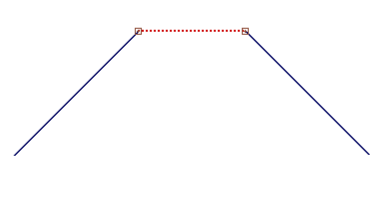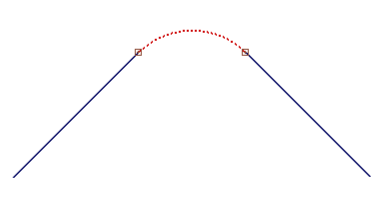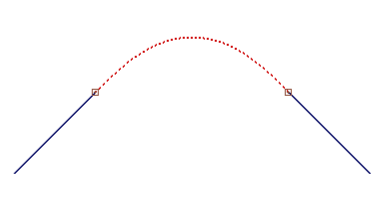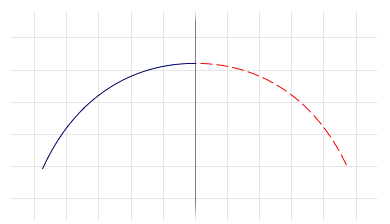 Constraint Continuity
Constraint Continuity
Changes the continuity required at the picked blend curve constraint.
Five tools are available on the Constraint Continuity pull-out, which support G0 through G4 continuity.
G0 is positional continuity. G1 is tangent continuity. G2 is curvature continuity. G3 and G4 are higher levels of continuity that ensure even smoother transitions between objects.
Access these tools from the Blend Curve Toolbox:

Constraint Continuity types
The three main types of continuity used in Alias are shown in the illustrations of three curves below.
Positional Continuity (G0)
The dashed curve touches the two solid curves, but there is an angle between them and so there is a sharp break between the curves.

Tangent Continuity (G1)
The dashed curve has no angle difference where it meets the solid curves. The Round surface tool and the Curve Fillet tool create this type of continuity.

Curvature Continuity (G2)
The dashed curve blends in even more smoothly to the solid curves.

There is one other use of continuity that you will use:
Implied Tangent (G3, G4)
A curve or surface is created on the center line, and will be mirrored. The Implied Tangent tools make sure that the two surfaces (original and mirrored) will be tangent to each other.

Blend point constraint workflow
- In Blend Curve Toolbox, choose the continuity level by selecting the Constraint Continuity tool
 G0 to G4.
G0 to G4.
Change how curvature continuity is calculated at the picked blend point
You can only change the curvature type of a constraint that is attached to an object, and has G2 or greater continuity.
- Choose the curvature type from the BlendCrv Tools palette in the Curvature Type sub-menu.